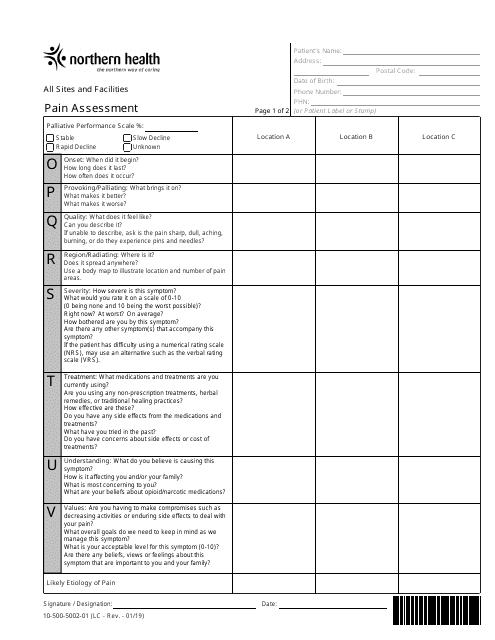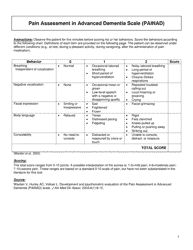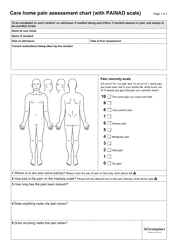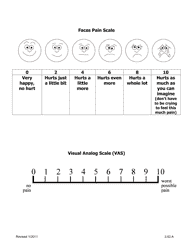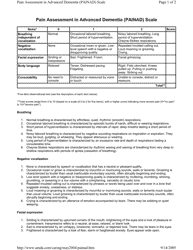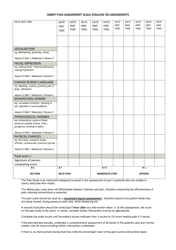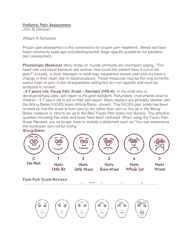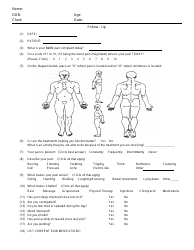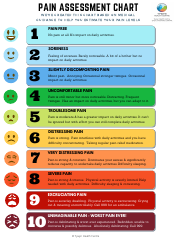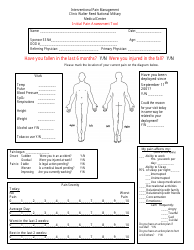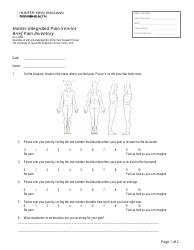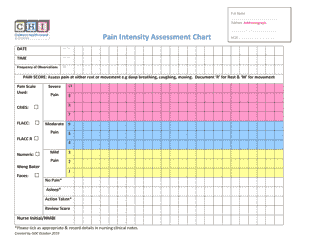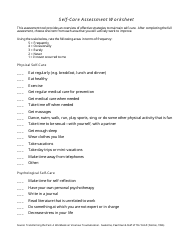Pain Assessment
Pain assessment is a crucial aspect of patient care used to diagnose and monitor pain. Through a combination of verbal discussions, physical examinations and sometimes, diagnostic tests, healthcare professionals can understand the severity, nature, and location of the pain. They can also track if an ongoing treatment is effective in reducing pain levels. Various standardized scales and questionnaires are used for a systematic and objective assessment of pain. This helps in creating a treatment plan tailored to individual needs. Adequate pain control can significantly improve the quality of life for those with chronic pain or recovering from surgery or injury.
A pain assessment is typically filed by a healthcare professional, such as a nurse or doctor. This could be in varying healthcare facilities like hospitals, clinics, or nursing homes in the USA, Canada, India, and Australia. The assessment is part of a broader patient evaluation to understand their level of discomfort, to provide appropriate pain relief, and manage their treatment plan effectively. The purpose of this document is to give a standardized measure of a patient's pain and to track changes over time. Depending on the country and specific healthcare system, the pain assessment might also be included in the patient's electronic health records.
FAQ
Q: What is a pain assessment?
A: A pain assessment is a process used by medical professionals to understand the location, intensity, and type of pain a patient is experiencing. This often involves a series of questions and physical examinations.
Q: Why is pain assessment important?
A: Pain assessment is important for proper diagnosis and treatment planning. It helps to identify the cause of the pain, evaluate the effectiveness of treatment, and monitor changes in the patient’s condition.
Q: How is a pain assessment conducted?
A: A pain assessment typically involves asking the patient a series of questions about the nature, location, intensity, and duration of the pain. Often, a pain scale is used, where the patient rates their pain on a scale of 0 (no pain) to 10 (worst pain imaginable). Physical examinations and tests may also be conducted.
Q: What is a pain scale and how is it used?
A: A pain scale is a tool used in a pain assessment to measure the intensity of a patient's pain. The patient is asked to rate their pain on a scale from 0 to 10, with 0 being no pain and 10 being the worst pain imaginable. This helps the healthcare provider understand the extent of the pain and monitor changes over time.
Q: What are some common types of pain?
A: Some common types of pain include acute pain, which is severe but lasts a short time, and chronic pain, which lasts a long time or consistently recycles. Pain can also be categorized as neuropathic, originating from damage to the nervous system, or nociceptive, caused by injury to body tissues.
Q: What types of professionals conduct pain assessments?
A: Various types of health professionals can conduct pain assessments, including physicians, nurses, physical therapists, and psychologists. The type of professional conducting the assessment may depend on the potential cause of the patient's pain.
Q: Can pain assessments be subjective?
A: Yes, pain assessments can be subjective as they rely heavily on the patient's personal experience and description of their pain. This is why communication between the patient and healthcare provider is crucial during these assessments.
Q: How often should a pain assessment be conducted?
A: The frequency of pain assessments may depend on the patient's condition and the nature of their pain. For acute pain, assessments may be performed regularly until the pain is managed. For chronic pain, assessments may be conducted on a routine basis to monitor changes and treatment effectiveness.
